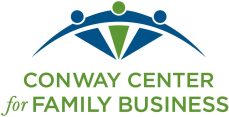Submitted by KeyBank, a Conway Center Service Provider –
Timing wise, fraud always picks up around the fourth quarter/holidays so it’s the best time to be vigilant and set parameters in place.[/testimonial]
The threat of fraud often centers on the continually evolving technologies used to conduct business and online banking. According to the 2014 Association for Financial Professionals (AFP) Fraud and Control Survey*, 60% of respondents experienced actual or attempted payments fraud.
Background: Understanding Fraud
Cyber criminals continue to target online banking and electronic payment transactions. Fraud committed against business bank accounts generally occurs by writing unauthorized checks, through wire fraud, or through ACH fraud. With two bits of information, your business checking account number and bank routing number, a criminal can make a payment for goods or services either by phone or online.
How Fraud Originates
The usual starting point for fraud is social engineering, which is the practice of obtaining sensitive information by tricking people into breaking normal security procedures to:
Divulge your passwords or other sensitive financial or personal information
Direct you to a website to download something malicious
Ask for remote access to your computer
Secretly install malicious software on your computer
Types of Social Engineering Fraud
One of the most common strains of social engineering is called phishing (pronounced “fishing”). Phishing usually involves a spammed email, phone call, voicemail, or text message sent by criminals who intend to capture personal information (e.g., Social Security number, credit card information, user IDs, and passwords).
Phishing emails often appear to come from legitimate sources you know, or a company you specifically do business with.
Phishing emails often contain malware that can be installed on your computer when you take the action requested in the email. These emails may also attempt to steal your banking credentials or other personal information by asking you to confirm data.
Malware can cause a wide range of problems, from system disruptions to the loss of personal data or identity theft.
Your computer could also be infected when a user:
Visits less-than-trustworthy websites (e.g., gambling, adult content)
Downloads and installs “free” software
Visits a website that has been compromised
Responds to a malicious advertisement on a website
Another type of social engineering is account hijacking, whereby your email or any other account you have associated with a computing devise or service is stolen. For example, an employee may receive an email that appears to be sent from a manager requesting transactions to be initiated or a change in account information. Employees should be sure to confirm via phone or in persona if a change out of the ordinary is being requested.
Safeguarding Electronic Payments
To help protect against fraudulent wire transactions, organizations need to carefully monitor all electronic payments, and especially wire activity.
Never send funds to unknown individuals. Completely understand and verify crisis or urgent requests.
If you receive an unexpected, urgent message from any known senders asking you to wire funds to them, call them at a trusted phone number to ensure they truly sent the request.
What To Do About Online Fraud
Monitor your accounts regularly. Use the tools provided to you by your financial institution to protect your company against fraud.
Key Takeaways
Understand the most common types of fraud and how to identify them.
Know what to do if you uncover fraudulent activity or suspect you are victim of fraud.
Use a checklist of fraud detection and prevention techniques and how to employ them in your organization.
Your Business Benefits With Early Detection
Losses are reduced since you can prevent unauthorized transactions before they occur.
Identify potential fraudulent items quickly as opposed to waiting for your monthly statement and then identifying a problem.
Preventing losses saves you the time and effort associated with attempting to recover lost funds.
Leave a comment below if you’d like a “Protecting Your Accounts from Fraud Checklist” emailed to you!

